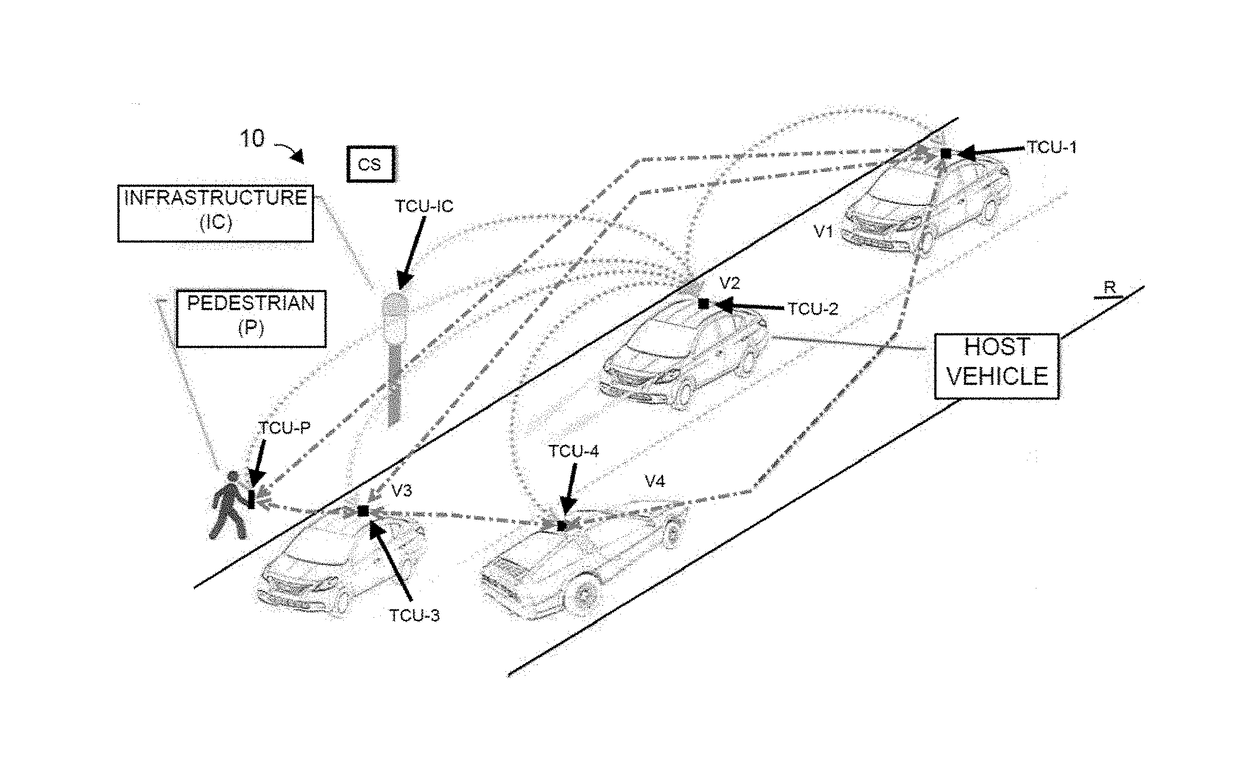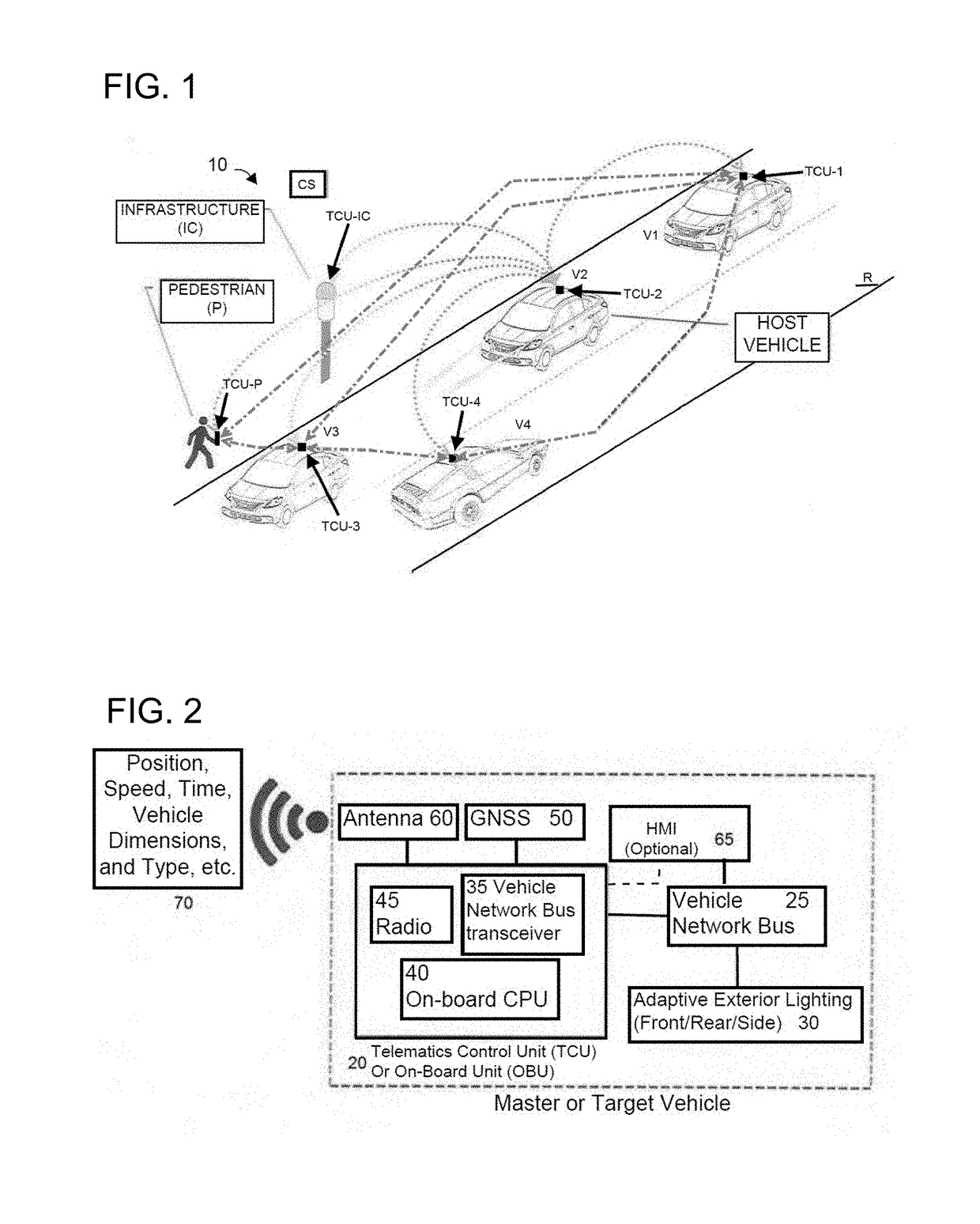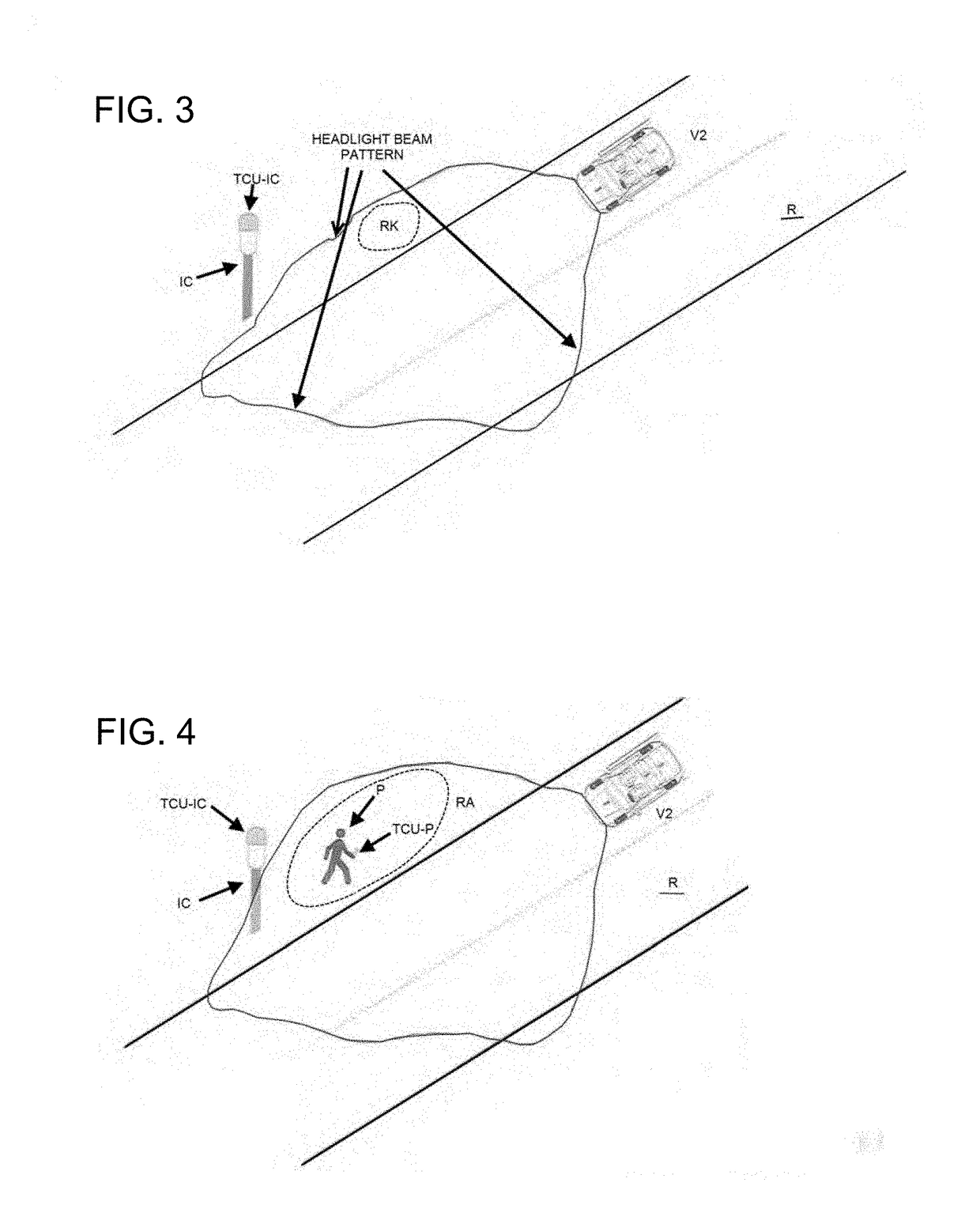Cooperative adaptive lighting system using vehicle to target or object communication
a technology of adaptive lighting and target, applied in traffic control systems, transportation and packaging, instruments, etc., can solve the problems of poor distance accuracy of adb camera, adb camera system only detects objects, and the accuracy is generally not obtained, so as to enhance the shape and light intensity of the headlamp beam, accurate distance measurement, and accurate measurement
- Summary
- Abstract
- Description
- Claims
- Application Information
AI Technical Summary
Benefits of technology
Problems solved by technology
Method used
Image
Examples
Embodiment Construction
[0077]FIG. 1 illustrates a cooperative adaptive lighting system 10 having four vehicles V1, V2, V3, and V4 on a roadway R, and a pedestrian P near the road. An infrastructure component IC is also located near the road R. The vehicles V1-V4 are equipped with Telematics Control Units (TCU) 20 (FIG. 2) described later herein, namely TCU-1-TCU-4, respectively, which may comprise computers, cell phones, pad-computers, and the like, together with transmitting and receiving antennas (shown in FIG. 2). The pedestrian P is equipped with a TCU device, which could a smartphone with compatible transmit radio and positioning capability and a dedicated wearable V2X transmitter, designated as TCU-P, but it should be understood that the TCU-P could simply be a transmitter, and the infrastructure component IC is equipped with a TCU, designated as TCU-IC. The TCU may comprise or be an on-board unit (OBU) having the same components. For ease of description and understanding, they will both be referred...
PUM
 Login to View More
Login to View More Abstract
Description
Claims
Application Information
 Login to View More
Login to View More - R&D
- Intellectual Property
- Life Sciences
- Materials
- Tech Scout
- Unparalleled Data Quality
- Higher Quality Content
- 60% Fewer Hallucinations
Browse by: Latest US Patents, China's latest patents, Technical Efficacy Thesaurus, Application Domain, Technology Topic, Popular Technical Reports.
© 2025 PatSnap. All rights reserved.Legal|Privacy policy|Modern Slavery Act Transparency Statement|Sitemap|About US| Contact US: help@patsnap.com



